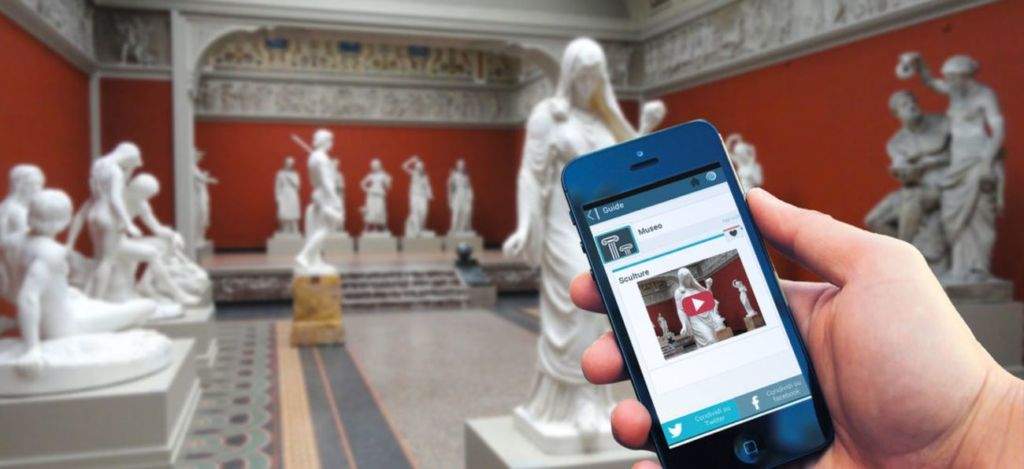Italian museums, despite goodwill, are still behind on digital. Istat says so.
Italian state museums are still too far behind on digital. This is what emerges fromIstat ’s findings released this morning: during the weeks of forced closure due to measures to contain the Covid-19 coronavirus pandemic, museums flooded the web and social media with a great deal of digital content, but this is a terrain on which our museums still mark the pace. "The lockdown experience experienced since the beginning of March, with the physical closure of all cultural venues on the Italian territory,“ Istat notes, ”has highlighted the need to implement and develop alternative ways for the public to enhance and enjoy cultural heritage and to rethink the contribution that digital technologies can provide."
So far, so good: cultural institutions have responded en masse to the call “I’m staying at home, culture doesn’t stop” and have promoted numerous online initiatives to enable citizens to access cultural heritage in web-based modes. However, Istat notes, “the process of digitization of cultural heritage and the services provided still has wide room for improvement in our country.” From the 2018 census data, in fact, only 11.5 percent of state museums have carried out digital cataloging of their heritage. Of this 11.5 percent, 20.8 percent have completed the digitization process (so, on balance, only 2 out of 100 state museums have the full catalog available online), 43.4 percent have put about half of their works online, and 35 percent have digitized less than half of their collections. Finally, only 6.1 percent make the catalog available to users.
It is better when it comes to digital instrumentation: 43.7 percent of state museums have a website, 65.9 percent have a social account, while only 9.8 percent offer the option of a virtual tour. The regional gap is not so pronounced: on the territory of dedicated websites, the best results are in Liguria, where 76.9 percent of museums have their own websites, Lombardy (72 percent), Veneto (62.5 percent) and Sardinia (57.9 percent), and the worst are Abruzzo (5.3 percent), Piedmont (25 percent), Molise (30.8 percent) and Marche (31.3 percent). Liguria also leads the way on social media: in fact, all Ligurian museums have an account. Right after we find Veneto (93.8 percent), Umbria (92.3 percent), Puglia (84.2 percent) and Emilia Romagna (75 percent), while Abruzzo (42.1 percent), Lombardy (52 percent) and Tuscany (53.6 percent) close the ranking again.
Lombardy and Abruzzo redeem themselves on virtual tours, however: Veneto leads the ranking (37.5 percent), immediately followed by Abruzzo (31.6 percent) and Lombardy (24 percent), while fourth place ex-aequo is shared by Liguria and Umbria, both with 23.1 percent. Black jersey for four regions that do not even offer a virtual visit: Basilicata, Calabria, Friuli-Venezia Giulia and Puglia. Of course, it should be noted that during the most acute weeks of the pandemic, many museums have equipped themselves , and the percentages (referring to 2018) are bound to rise, especially with regard to social and virtual visits. But good will is not enough: programming will now be needed.
“In the imminent future,” Istat concludes in fact, “it will be necessary to rethink some services and activities usually offered by museum facilities and also try to reduce the excessive concentration of the public in the same facilities, also enhancing the less frequented destinations. In order to redistribute the public and reduce physical contact, in compliance with the ’social distancing’ measures issued by the authorities, it could be useful, for example, to strengthen the online ticketing service, currently offered by less than four out of ten state museums (23.5 percent), which would allow citizens to remotely book their visit as well as rationalize and manage flows more efficiently. Looking ahead, despite the easing of the restrictions currently in place, it is presumable that the activities and services of museums usually carried out onsite and involving a collective physical presence of the public will be especially penalized: these include live performances and cultural initiatives, organized by 70.7 percent of state museums, and conferences and/or seminars hosted in their spaces by more than half (56.7 percent) of these facilities. Training activities, courses, and educational projects for children and adults carried out by 58 percent of state museums, which involved more than one million users in 2018, could also be severely restricted due to the virus containment measures.”
 |
| Italian museums, despite goodwill, are still behind on digital. Istat says so. |
Warning: the translation into English of the original Italian article was created using automatic tools. We undertake to review all articles, but we do not guarantee the total absence of inaccuracies in the translation due to the program. You can find the original by clicking on the ITA button. If you find any mistake,please contact us.



























